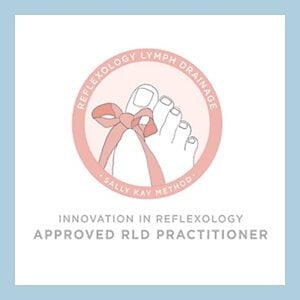Understanding Reflexology Lymph Drainage: A Key to Managing Lymphoedema

In the intricate network of our body’s systems, the lymphatic system plays a pivotal role in maintaining health and homeostasis. While often overlooked, this one-way drainage system is essential for fluid balance and immune function. In this blog, we will explore the fundamentals of lymphatic function, the challenges of lymphoedema, and how reflexology lymph drainage can be a valuable tool for managing this condition.
The Lymphatic System: An Overview
What Is Lymph?
Lymph is a clear fluid that contains white blood cells, proteins, and waste products. It circulates through lymph vessels, which are similar to veins but serve a different purpose. The lymphatic system collects excess fluid from tissues, filters it through lymph nodes, and eventually returns it to the bloodstream, helping to maintain fluid balance and facilitate immune responses.
Lymph Vessels and Nodes
Lymph vessels act as channels that transport this fluid toward larger vessels called lymphatic trunks and ducts. Lymph nodes are small, bean-shaped structures that filter the lymph and produce immune cells, helping our body fight infections. Major lymph vessels include the thoracic duct and cisterna chyli, which play crucial roles in draining lymph from both sides of the body.
The Thoracic Duct and Cisterna Chyli
The thoracic duct is the largest lymphatic vessel in the body. It collects lymph from the left side of the head, neck, chest, and the entire lower half of the body. The cisterna chyli is a dilated sac at the beginning of the thoracic duct that collects lymph from the lower abdomen and limbs. Typically, lymph from the right side of the body drains through the right lymphatic duct.
The Role of the Spleen and Other Organs
While the lymphatic system’s primary function is drainage, it also plays a significant role in immunity. The spleen filters blood, removes old or damaged blood cells, and helps fight certain kinds of bacteria. Other immune-related organs include the tonsils, thymus, Peyer’s patches in the intestines, and bone marrow, all of which contribute to body defense but don’t directly participate in lymph drainage.
Lymph Flow and Lymphoedema
Understanding the normal flow of lymph is crucial for recognizing when things go awry. Lymph flows smoothly through the lymphatic system, assisted by muscle contraction, movement, and gravity. However, when this flow is disrupted, it can lead to a condition known as lymphoedema.
What Is Lymphoedema?
Lymphoedema occurs when lymph fluid builds up in tissues, often leading to swelling in the arms or legs. This can be classified as primary lymphoedema, which is a rare genetic condition, or secondary lymphoedema, which is typically caused by damage to lymph nodes or vessels, often due to surgery, radiation therapy, or infection.
Symptoms of Lymphoedema
Common symptoms include:
Swelling in one or both limbs
A feeling of heaviness or tightness
Restricted range of motion
Pain or discomfort
Recurrent infections

Reflexology Lymph Drainage: A Path to Relief
Reflexology lymph drainage (RLD) is a specialized form of reflexology that focuses on stimulating the lymphatic system, promoting lymph flow, and reducing the symptoms of lymphoedema. This technique involves gentle pressure on specific reflex points associated with lymphatic drainage, encouraging the body to facilitate its own healing processes.
Research Insights
Recent findings by Sally Kay highlight the benefits of reflexology lymph drainage in managing lymphoedema. Clients have reported improved symptoms, including reduced swelling and improved mobility. Beyond lymphoedema, RLD may also offer support in the management of other immune-related diseases, potentially enhancing overall well-being by promoting lymphatic health.
Conclusion
Understanding the lymphatic system and how it contributes to our health is essential, especially for those dealing with lymphoedema. Reflexology lymph drainage emerges as a promising approach to managing the symptoms associated with this condition. As research continues to evolve, techniques like RLD may not only provide relief for individuals with lymphoedema but also support the broader spectrum of immune health. For those seeking relief and improved quality of life, exploring reflexology as part of a comprehensive management plan could be a valuable step forward.
To book an appointment please get in touch. You can find out more about Sally's work click here